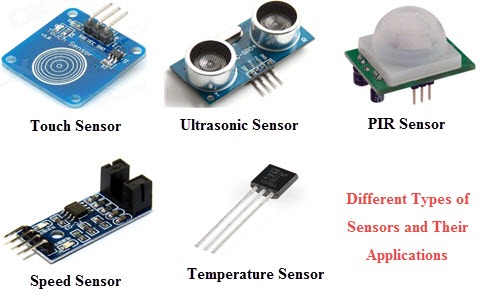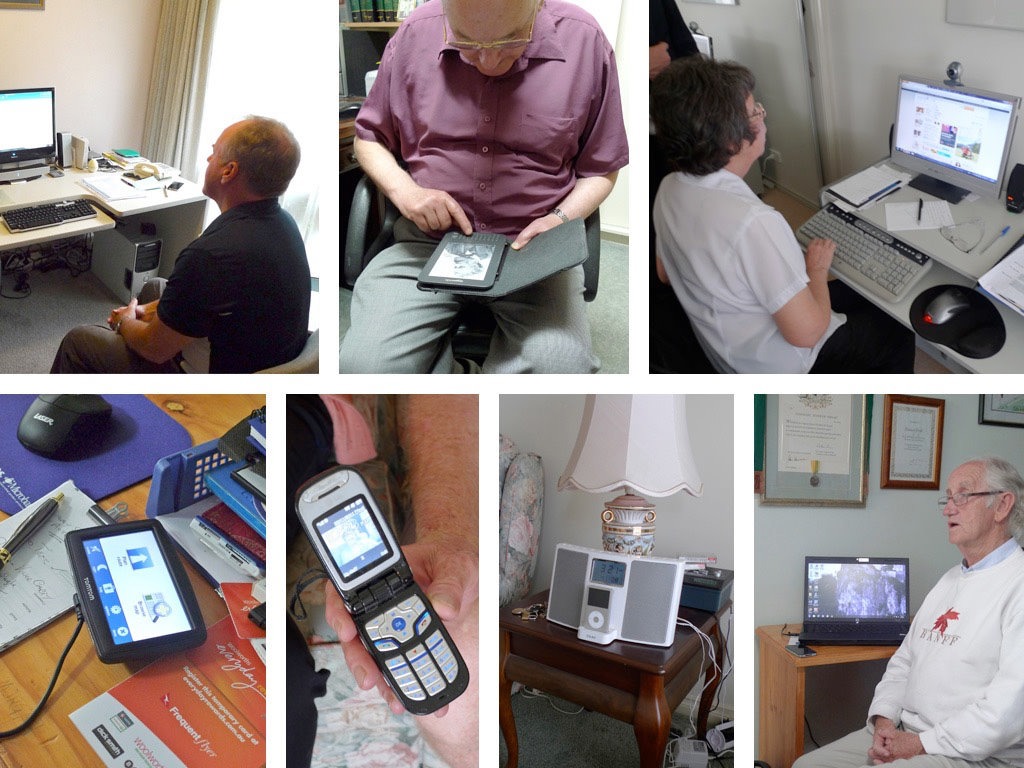
Privacy in pervasive computing: always-on devices, ambient sensors.
Exploring the challenges and implications of privacy in pervasive computing, this article examines how always-on devices and ambient sensors collect, process, and transmit personal and environmental data, offering convenience and intelligence while raising critical concerns about surveillance, consent, data security, ethical responsibility, and regulatory gaps, and discusses strategies to balance innovation with protecting individual autonomy and trust in a connected world.
✨ Raghav Jain

Introduction
The 21st century has ushered in a new era of computing known as pervasive computing or ubiquitous computing—a world where technology is seamlessly integrated into our daily lives, often to the point of invisibility. From smart homes and wearable devices to intelligent transportation systems and healthcare monitoring, computing has transcended the desktop and mobile phone to inhabit our physical environments. This shift has been made possible by always-on devices and ambient sensors that collect, process, and transmit data continuously. While these innovations promise convenience, efficiency, and personalization, they also pose profound challenges to privacy, autonomy, and security.
This article explores the landscape of pervasive computing, the role of always-on devices and ambient sensors, the privacy risks they introduce, the ethical and regulatory debates surrounding them, and strategies for building a privacy-respecting future.
Understanding Pervasive Computing
Pervasive computing envisions a world where computation is embedded in everyday objects and environments, making interactions with technology more natural and seamless. Unlike traditional computing, where interaction is deliberate (typing on a keyboard, tapping on a phone), pervasive computing emphasizes invisible, background computing that anticipates human needs.
Examples include:
- Smart homes with intelligent lighting, thermostats, and appliances.
- Wearables like smartwatches and health trackers.
- Urban sensors for traffic management, pollution monitoring, and surveillance.
- Healthcare IoT devices that monitor vitals and send real-time data to doctors.
Central to this ecosystem are always-on devices—gadgets designed to continuously listen, watch, or sense—and ambient sensors that blend into our environment, often unnoticed.
Always-On Devices: A Double-Edged Sword
Always-on devices refer to technologies that remain in a continuous listening or monitoring state. Examples include:
- Smart speakers (Amazon Echo, Google Home, Apple HomePod).
- Voice assistants on smartphones.
- Security cameras with cloud storage.
- Fitness trackers that record heart rate and sleep 24/7.
Advantages
- Convenience: Instant activation (“Hey Siri” or “Alexa”).
- Personalization: Devices learn user habits to deliver tailored recommendations.
- Safety: Wearables that detect falls or heart irregularities.
Risks
- Surveillance creep: Microphones and cameras recording conversations without explicit consent.
- Data misuse: Voice and behavioral data monetized by corporations.
- Security vulnerabilities: Hackers exploiting always-on features to eavesdrop.
For instance, reports have shown smart speakers accidentally recording private conversations due to misinterpreted “wake words.” These incidents highlight the tension between functionality and privacy.
Ambient Sensors: The Invisible Collectors
Ambient sensors are embedded in physical spaces—homes, offices, streets, vehicles—and continuously collect data on movement, temperature, sound, air quality, and more. They are critical for smart cities and context-aware computing, where the system adapts based on user environment.
Examples include:
- Motion sensors for smart lighting.
- Environmental sensors for air quality monitoring.
- Beacons tracking location in retail stores.
- Biometric sensors in workplaces for access control.
Benefits
- Efficiency: Automated energy-saving systems reduce costs and emissions.
- Public safety: Environmental sensors detect hazards like gas leaks.
- Improved services: Real-time transport updates via city-wide sensors.
Risks
- Unseen surveillance: Citizens may be unaware of being tracked.
- Behavioral profiling: Data collected can reveal intimate details—sleep patterns, daily routines, shopping habits.
- Chilling effects: Awareness of constant monitoring may discourage free expression or behavior.
The Privacy Paradox
The widespread use of pervasive computing has created a privacy paradox—users desire convenience and personalization but are uncomfortable with the level of surveillance required to achieve them.
Key privacy concerns include:
- Informed Consent – Often, users don’t know what data is collected, how it is stored, or who has access.
- Data Ownership – Is the data generated by smart devices owned by the user, the manufacturer, or third-party platforms?
- Function Creep – Data collected for one purpose may later be repurposed without consent.
- Anonymity Erosion – Even anonymized datasets can often be re-identified by cross-referencing with other data sources.
A classic example is the case of retail analytics, where companies use sensors and purchase data to predict customer behavior—sometimes even identifying pregnancies before families themselves made it public.
Case Studies in Privacy Risks
1. Smart Speakers and Accidental Surveillance
In 2019, reports revealed that contractors at Amazon, Google, and Apple listened to recordings from smart speakers to “improve accuracy.” Many users were unaware their private conversations were accessible to humans.
2. Smart Cities and Surveillance Concerns
Cities like Toronto and Singapore have experimented with sensor-laden “smart neighborhoods.” While these promise efficiency, citizens fear mass surveillance and lack of transparency about data handling.
3. Health Monitoring Devices
Wearable health monitors, while beneficial, create sensitive medical datasets. If breached, this data could be exploited by insurers, employers, or cybercriminals.
Ethical Dimensions
Pervasive computing raises ethical dilemmas beyond mere technical concerns:
- Autonomy: Do individuals truly have a choice in environments saturated with sensors?
- Trust: Will citizens trust institutions deploying pervasive monitoring if transparency is absent?
- Equity: Are privacy violations disproportionately affecting marginalized groups?
- Power dynamics: Who controls the flow of data—the individual, corporations, or governments?
Ethics demands that designers build systems with privacy by design, not as an afterthought.
Legal and Regulatory Challenges
Current data protection laws (like GDPR in Europe or CCPA in California) attempt to address privacy in digital systems, but pervasive computing introduces new challenges:
- Ubiquity: Data collection often happens without active user interaction, making consent harder.
- Cross-border data flows: Sensors in one country may send data to servers in another.
- Sectoral gaps: Health data collected by wearables may not fall under traditional healthcare privacy laws.
Regulators face the task of updating frameworks to cover ambient, continuous data collection.
Designing for Privacy in Pervasive Computing
To balance innovation and privacy, several strategies are critical:
- Privacy by Design – Building systems with privacy principles at the core.
- Transparency Dashboards – Giving users visibility into what data is collected and how it is used.
- Edge Computing – Processing data locally on the device to minimize cloud exposure.
- Differential Privacy – Introducing statistical “noise” to protect individual identities while retaining insights.
- Opt-in, not opt-out models – Making data collection optional, not default.
- Policy and Governance – Stronger, enforceable frameworks that hold corporations accountable.
The Future of Privacy in Pervasive Computing
As computing grows more pervasive with the rise of AI, 5G, and the Internet of Things (IoT), the stakes for privacy will rise dramatically. The emergence of ambient intelligence—environments that not only sense but also predict and decide—could further blur boundaries between convenience and surveillance.
The challenge is not whether pervasive computing will expand (it will), but whether society can govern its growth responsibly, ensuring individuals retain agency and dignity in a data-driven world.
Pervasive computing, also known as ubiquitous computing, represents a paradigm where technology becomes seamlessly embedded into everyday life through always-on devices and ambient sensors that collect, analyze, and respond to data in real time, creating an environment of invisible computing designed to anticipate human needs, improve convenience, and increase efficiency. From smart homes with intelligent lighting and thermostats, to wearable devices like fitness trackers and smartwatches, to city-wide sensor networks monitoring traffic, air quality, and public safety, pervasive computing is transforming the way humans interact with machines. Always-on devices such as smart speakers, smartphones with voice assistants, and connected security cameras remain constantly active, listening for commands or monitoring surroundings, while ambient sensors embedded in homes, offices, streets, and vehicles continuously collect contextual data about motion, temperature, sound, and air quality. These innovations bring undeniable benefits—instant convenience through voice activation, personalized experiences, automated energy efficiency, enhanced healthcare monitoring, and improved public services—yet they also introduce unprecedented privacy challenges. The risks include surveillance creep where devices inadvertently record conversations, misuse of behavioral data for commercial profit, security vulnerabilities that hackers exploit, and the erosion of autonomy when individuals have little awareness or control over the data being captured about them. For example, smart speakers have been reported to accidentally activate and record private conversations when they misinterpret wake words, and contractors from major companies like Amazon and Google have been found reviewing user recordings to improve voice recognition systems without explicit informed consent. Similarly, ambient sensors in smart cities, while useful for managing transport or detecting environmental hazards, raise fears of mass surveillance where citizens are tracked without transparency or control. The situation gives rise to the privacy paradox: people want convenience and personalization but are uneasy about the continuous surveillance required to achieve them. Core concerns include informed consent—since users often do not know exactly what is collected or where it goes—data ownership, function creep where data collected for one purpose gets reused for another, and the erosion of anonymity as even anonymized datasets can often be re-identified by combining with other sources. Case studies underline these issues, from smart speakers exposing intimate household conversations, to smart neighborhood projects in Toronto and Singapore sparking protests over excessive surveillance, to health wearables generating sensitive medical data that, if leaked, could be exploited by insurers or employers. The ethical dimensions are equally profound: autonomy is challenged when opting out of pervasive sensors becomes nearly impossible, trust erodes when corporations fail to disclose practices, inequities emerge as vulnerable groups are disproportionately surveilled, and power imbalances grow as corporations and governments gain unprecedented control over personal data. Legal and regulatory frameworks like GDPR in Europe and CCPA in California attempt to tackle data protection, but they struggle with pervasive computing’s unique challenges—ubiquity makes consent less meaningful, cross-border data flows complicate jurisdiction, and sectoral gaps leave health or lifestyle data outside traditional protections. The way forward lies in a combination of technological, regulatory, and ethical strategies: privacy by design ensures systems are built with safeguards from the ground up; transparency dashboards give users visibility and control over data; edge computing processes data locally on devices rather than sending everything to the cloud; differential privacy techniques add statistical noise to protect individual identities; opt-in models ensure users choose data sharing rather than being defaulted into it; and updated laws create stronger accountability for companies and governments alike. As AI, 5G, and the Internet of Things accelerate pervasive computing, the stakes will rise further with the advent of ambient intelligence, where environments not only sense but also predict and decide based on user behavior. The risk is that convenience may slide into constant surveillance, chilling free expression and undermining human dignity, unless proactive measures are taken. In conclusion, pervasive computing through always-on devices and ambient sensors is reshaping modern life, offering unprecedented convenience and efficiency but also creating profound threats to privacy and autonomy. The balance requires technological safeguards, stronger regulation, and ethical responsibility to ensure that pervasive computing evolves as a tool of empowerment rather than a mechanism of control, so that individuals retain agency and trust in an increasingly data-driven world.
Pervasive computing, often referred to as ubiquitous computing, represents a transformative shift in technology where computing capabilities are embedded seamlessly into everyday environments, objects, and devices, allowing for continuous data collection, real-time processing, and context-aware interactions that operate largely in the background, often without conscious user engagement, and central to this paradigm are always-on devices and ambient sensors, which collectively create an ecosystem capable of monitoring, analyzing, and responding to human behaviors, environmental conditions, and personal preferences, thereby offering unprecedented convenience, personalization, and efficiency while simultaneously raising significant concerns regarding privacy, autonomy, and security, because the very features that make these systems appealing—their continuous connectivity, persistent sensing, and seamless integration—also make it possible for sensitive personal data to be captured, stored, analyzed, and shared in ways that can be opaque, unintended, or even exploitative; always-on devices such as smart speakers, voice assistants embedded in smartphones, connected security cameras, and wearable fitness trackers operate continuously, listening for wake words, tracking movement, monitoring health metrics, or capturing audio and video data, which allows users to interact naturally, receive tailored recommendations, and benefit from automated safety alerts, yet the constant state of activation also introduces vulnerabilities, ranging from inadvertent recordings of private conversations to malicious exploitation by hackers or unauthorized third parties, and several high-profile incidents have highlighted these risks, including reports of contractors employed by major technology firms listening to recordings from smart speakers and personal assistants in order to improve machine learning models, often without the explicit consent or knowledge of users, thereby demonstrating how convenience-driven technologies can simultaneously erode privacy and expose intimate aspects of daily life, while ambient sensors, embedded into homes, workplaces, public spaces, and urban infrastructure, collect data on temperature, motion, sound, air quality, and occupancy patterns to enable smart lighting, energy management, intelligent traffic systems, and predictive analytics in smart cities, but these sensors, often invisible or unnoticed by individuals, contribute to a form of ambient surveillance that can track routines, infer behaviors, and create detailed personal profiles, thus intensifying the privacy paradox, wherein users desire the benefits of connected, intelligent environments but are uncomfortable with the extent of monitoring necessary to provide these services, and this paradox is further complicated by issues such as informed consent, data ownership, and the potential for function creep, where data originally collected for one purpose is repurposed for others, often without user awareness, and while anonymization techniques are sometimes applied, research has shown that even anonymized data sets can often be re-identified through cross-referencing, meaning that the supposed safeguards may not fully protect individual privacy; moreover, the ethical considerations are profound, as pervasive computing challenges traditional notions of autonomy, freedom, and trust, because individuals may have little practical ability to opt out of sensor-rich environments, raising questions about informed choice and the degree to which consent can be truly meaningful, while also highlighting disparities in surveillance exposure that may disproportionately affect vulnerable populations, and amplifying power imbalances between technology providers or governmental authorities and ordinary citizens, who may lack the knowledge or resources to manage their own data footprints effectively, and regulatory frameworks, although evolving, often lag behind technological innovation, with laws such as Europe’s GDPR and California’s CCPA providing important protections but encountering limitations in addressing the continuous, ambient, and cross-border nature of data collection in pervasive computing contexts, as these frameworks were largely designed for transactional data processing rather than constant environmental sensing, leaving gaps that require both technological and policy-based solutions, such as privacy-by-design principles, where systems are constructed from the outset to minimize data exposure and maximize user control, edge computing approaches that allow data to be processed locally rather than being sent to centralized servers, differential privacy techniques that introduce statistical noise to protect individual identities, transparent dashboards that give users visibility into what data is being collected and how it is used, and opt-in models that prioritize voluntary participation over default enrollment, and as artificial intelligence, machine learning, 5G connectivity, and the Internet of Things continue to expand, the potential for ambient intelligence, where environments not only sense but also predict and respond autonomously to user behaviors, will further intensify these privacy concerns, creating a critical need for ongoing research, public awareness, and proactive governance to ensure that the convenience and personalization benefits of pervasive computing do not come at the cost of fundamental rights, trust, or social equity, and ultimately, the challenge lies in balancing innovation and privacy in a way that allows society to enjoy the advantages of always-on devices and ambient sensors while maintaining individual autonomy, informed consent, and ethical stewardship of data, so that pervasive computing evolves as a tool of empowerment and efficiency rather than as a mechanism for surveillance and control, ensuring that individuals retain agency, security, and dignity in an increasingly interconnected, sensor-rich world.
Conclusion
Pervasive computing, through always-on devices and ambient sensors, has revolutionized modern life with convenience, personalization, and efficiency. However, this transformation comes at a significant cost to privacy, autonomy, and trust. From smart speakers that record conversations to city-wide sensor networks tracking movement, individuals face unprecedented levels of surveillance.
The key lies in addressing the privacy paradox—designing systems that deliver value without eroding fundamental rights. This requires a combination of technological safeguards (edge computing, privacy-by-design), regulatory frameworks (laws that account for ambient data collection), and ethical responsibility (transparency, fairness, accountability).
Pervasive computing will define the digital landscape of the future. Whether it becomes a tool of empowerment or surveillance depends on choices made today by developers, policymakers, and society at large.
Q&A Section
Q1: What is pervasive computing?
Ans: Pervasive computing, also called ubiquitous computing, refers to the integration of computing into everyday environments and objects, enabling seamless, often invisible interactions with technology.
Q2: What are always-on devices?
Ans: Always-on devices are technologies like smart speakers, smartphones, or wearables that remain in a continuous listening or monitoring mode, ready to respond instantly to user commands.
Q3: What privacy risks do ambient sensors pose?
Ans: Ambient sensors can collect data invisibly, leading to risks such as behavioral profiling, erosion of anonymity, and surveillance without informed consent.
Q4: What is the privacy paradox?
Ans: The privacy paradox refers to the conflict between users’ desire for convenience and personalization and their discomfort with the level of data collection and surveillance needed to achieve it.
Q5: How can pervasive computing respect privacy?
Ans: Through privacy-by-design approaches, local (edge) data processing, transparent dashboards, differential privacy techniques, and stronger data protection regulations.
Similar Articles
Find more relatable content in similar Articles

Digital Privacy in 2025: How S..
In 2025, digital privacy faces.. Read More

Cloud PCs: Will Your Next Comp..
Cloud PCs are transforming the.. Read More

Digital inclusion: designing d..
Designing technology for elder.. Read More

From Phishing to Data Theft: ..
Cybercrime in India is evolvi.. Read More
Explore Other Categories
Explore many different categories of articles ranging from Gadgets to Security
Smart Devices, Gear & Innovations
Discover in-depth reviews, hands-on experiences, and expert insights on the newest gadgets—from smartphones to smartwatches, headphones, wearables, and everything in between. Stay ahead with the latest in tech gear
Apps That Power Your World
Explore essential mobile and desktop applications across all platforms. From productivity boosters to creative tools, we cover updates, recommendations, and how-tos to make your digital life easier and more efficient.
Tomorrow's Technology, Today's Insights
Dive into the world of emerging technologies, AI breakthroughs, space tech, robotics, and innovations shaping the future. Stay informed on what's next in the evolution of science and technology.
Protecting You in a Digital Age
Learn how to secure your data, protect your privacy, and understand the latest in online threats. We break down complex cybersecurity topics into practical advice for everyday users and professionals alike.
© 2025 Copyrights by rTechnology. All Rights Reserved.